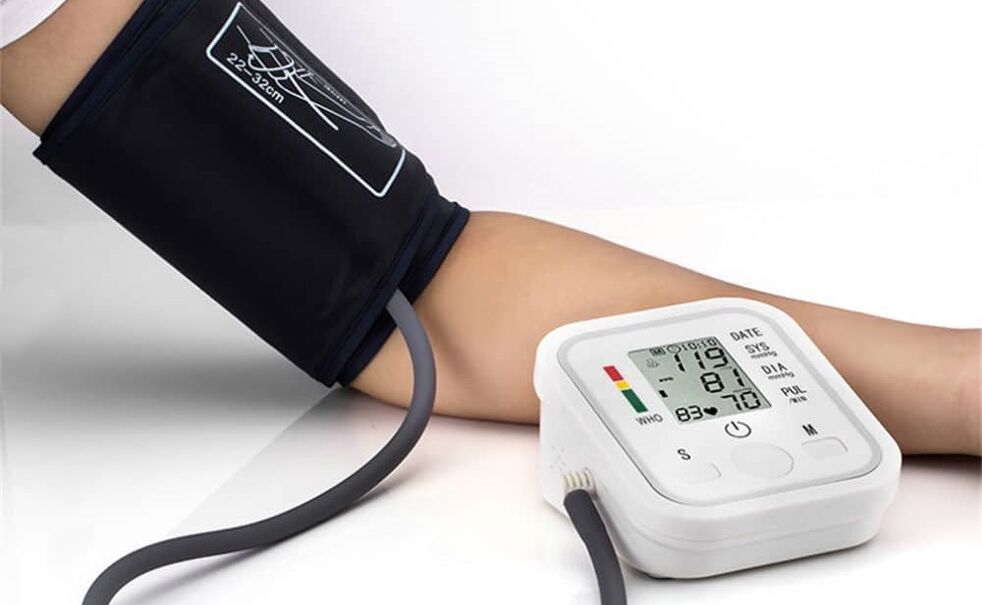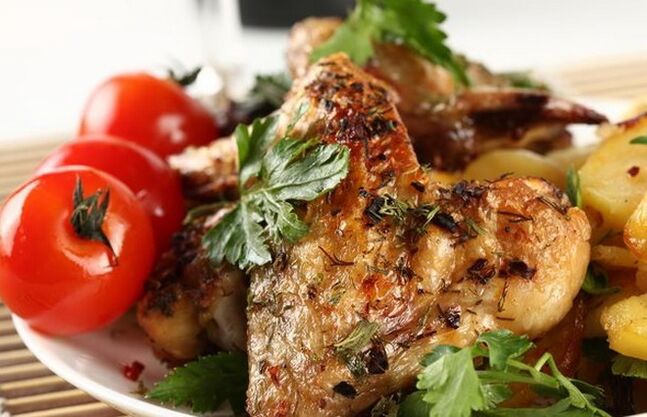The third population of the world is signs of hypertension. Hypertension pressure causes stenosis and vascular damage and sometimes bleeding heart attack. Therefore, even healthy people are extremely important to know what the pressure is, what affects what indicators can be considered as the norm, which may be a sign of the number of tonometer.
The essence of the concept
Blood pressure is due to its effect on main and peripheral blood vessels. The pressure markers directly depend on several factors:
- vascular elasticity;
- heart contractions;
- The amount of blood pumped with a heart for a certain period of time.
The value of blood pressure (blood pressure) is normal to write in the form of a relationship in which:
- The upper number of high - systolic pressure (with the contraction of the heart);
- Lower digit, smaller - diastolic pressure (between heart contraction).
Blood pressure can change - changes in the body's position, physical exercises, nervous surge, rest or after a meal. If a person does not experience health problems, the pressure will stabilize after a short period of time. In case of hypertension, increased indicators retain for a long time. In case of hypertension, sharp fluctuations in blood pressure are observed. After sleep, you can rise after a meal and then decline. Evening pressure markers usually exceed the morning and sometimes suddenly decrease at night.
Analysis of blood pressure indicators is usually a higher value to the top number. Systolic pressure has increased that the main risk factors of cardiovascular pathologies are over 50 years of age. In the vast majority of people, over the years, main arteries have lost their elasticity and atherosclerotic plaques.
Norm and pathology
Blood pressure is an individual indicator, depending on age, surrounding circumstances, accompanying pathologies and even the time of day. But there are averaged medical indicators. After finding out the pressure on the patient, the doctor will determine it - a variation of hypertension or norms.
Blood pressure in patients under 18 years of age
| Systolic | Diastolic | Optimal | Less than 120 | Less than 80 | Normal | Up to 130 | Up to 85 | Usually high | Up to 140 | Up to 90 | 1 degree high blood pressure | Up to 160 | Up to 100 | 2 high blood pressure | Until 180 | Up to 110 | 3 degrees of high blood pressure | Over 180 | More than 110 | Isolated systolic hypertension | Over 180 | Less than 110 |
Systematic pressure regulation promotes the serious consequences of hypertension as the abnormal changes in indicators are observed in time.
The reasons for deviation from the norm
Blood pressure never changes for no reason. Its fluctuations can be caused by cardiovascular, digestive system, geniturinary system, traumatic brain injuries. But the factors that provoke change are not always due to pathologies. Blood pressure increases often occur:
- allergic reactions;
- stressful situations;
- hormonal failures;
- smoking;
- alcohol abuses;
- weather addiction;
- taking some drugs;
- overwork;
- dehydration;
- consumption of fatty foods;
- excessive amount of salt consumed;
- Hypodynamia or, on the contrary, physical tension.

Increasing pressure can be caused by age -related changes in the body and hereditary predisposition.
Clinical manifestations
Increased blood pressure is very noticeable. Visual symptoms of pathological changes are more likely to serve:
- Acute headache (usually in the temples and back of the head), often with vomiting reflexes;
- Redness of the skin (sometimes blood vessels appear);
- Obvious weakness, noise in the ear, flying in the eyes;
- Redness of eye proteins (sometimes violation of visual acuity);
- dyspnea;
- pain behind the sternum;
- chills;
- insomnia;
- heartbeat;
- Increased sweating.
In the presence of such symptoms, consult a doctor. Early hypertension is dangerous asymptomatic. Sometimes a person does not even think about the fact that he increases the pressure.
Increasing the diet should be inserted in addition to products that can effectively break down fats and prevent thrombosis.
To diagnose changes
After 20 years, it is recommended to measure the pressure during the test. If this is higher than the norm, your doctor will prescribe additional tests. One hour high indicators do not always indicate the presence of hypertension. The disease is diagnosed when increased indicators are observed with several consecutive exams and retained after three months of adherence to medical instructions to adjust the lifestyle.
You -Diagnosis on Pulse
Without a medical device, it is impossible to accurately determine the pressure alarms, but the presence of negative changes can be assumed by the pulse. By applying the ring and index fingers, the number of heart bends should be calculated in 30 seconds and multiplied by two (the number of beats per minute). The impulse equal to 60-80 shots can be considered normal. With increased pressure, the pulse can be felt without difficulty. If you have a heart rate monitor, you can use it.
Using tonometer
Various tonometers are used to accurately measure blood pressure. The structure of the device is distinguished by the principle of action. The tonometers of mercury were replaced by pneumatic and then electronic devices. The latter can easily use a person who has no medical education. These are characterized by compactness, accuracy and easy use.
Such tonometers generally show not only systolic and diastolic pressure indicators, but also pulse frequency. At the same time, the previous measurements are "remembered" by experts to monitor the dynamics of changes in the blood pressure of each patient.
Arimistic rights
The measurement of blood pressure should be monitored with maximum attention. This applies to both professionals and patients who monitor the level of pressure on their own. There are certain rules:
- The day before the measurement should leave tonic drinks and smoking;
- Do not use eye and nose drops on the day of the measurement;
- Measure the pressure half an hour after a meal;
- Before applying the tonometer cuff, the patient should be in a comfortable position by placing a relaxed hand on a flat hard surface;
- The cuff should be placed in the center of the shoulder. It should be 2, 5 cm from the edge of the elbow. Airplaces should lie along the center line of the shoulder;
- Between the cuff, which is located at the same level as the heart and the shoulder must be left to which the finger can be easily placed;
- Absolute peace of mind should be maintained during the operation of the tonometer.
First, experts recommend that you put pressure on both hands and then only on those that "give" the highest indicators. If the measurement is done outside the walls of the medical institution, it is recommended that the patient make an "accounting" notebook and enter the sun, time and measurements. The doctor determines how often the measurements should be done.
Potential consequences
High blood pressure is full of hypertonic crises - a sudden jump of indicators to the critic. Such states trigger sharp expansion of blood vessels, which may be interrupted. In a series of consequences, high blood pressure is distinguished:
- Eye problems (reduction of visual acuity, bleeding);
- kidney failure;
- heart ischemia;
- heart failure;
- Angina pectoris;
- stroke;
- infarction;
- impotence;
- swelling of light and brain;
- death.
It is recommended to reduce pressure as quickly as possible by the risk of peeling aorta aneurysm. And with brain disorders, this must be done without hurry, otherwise they will get worse.
Hypertension often causes disability and even the patient's death.
Home reaction
With the hypertonic crisis (upper pressure above 200 mm hg), you should call a rescue group urgently and start measures to eliminate symptoms before arriving. With a moderate increase in pressure, it can act independently.
Warning measures
If signs of increased pressure occur, its indicators must be measured. Headache, nausea, weakness can occur for other reasons. If the pressure really increases, it follows:
- Ensure peace, dampening and silence (including workplace);
- provide access to fresh air;
- lie down, lifts your head (at work, if there is no way, sit comfortably);
- perform breathing exercises (diaphragmatic breathing focuses on exhalation);
- Massage the collar zone and head (it is desirable for relatives or friends to do so);
- Drink a diuretic (parsley, lingonberry, green or kidney tea, lace beam).
Such measures slowly reduce pressure and are more likely to prevent complications. If they do not help, contact a cardiologist.
Rapid effect
Patients with an active lifestyle often face the problem of rapid pressure. Medicinal medicines can do this, but they should be used carefully - to avoid overdose, reducing pressure and other complications too quickly. The doctor should prescribe medications. Pressure reduces pressure quickly and safely:
- peace;
- refrigerator on the head;
- Warm bath for the limbs (not hot! ). You can use a container with water or heating bench, mustard;
- Salt Fitochai (valerian, motherwort, chamomile, mint, lemon balm).
In the absence of the expected effect, the measures listed are supplemented with drugs.
Homemade first -aid set
Special medicines should always be the problems that are regularly encountered in the composition of the home medicine cabinet.
The lack of drug drugs can be compensated by using a "permanent" medicine, but its effect is only noticeable after two hours. Accepting medicines follows:
- Use only the funds prescribed by the doctor;
- Do not mix the drugs;
- Dissolve the "Emergency Supply" tablets and do not swallow;
- Remove the medicine (stay horizontal for another 30 minutes after picking). If necessary, you should get up slowly.
When accepting medicines, pay attention to contraindications and side effects.
Inevitable restrictions
In addition to increased pressure, certain restrictions must be observed to avoid negative consequences:
- Avoid increased physical activity within 24 hours of stabilization of the pressure;
- Avoid psycho -emotional overloads, with the inevitable occurrence of stressful situations, take sedatives;
- Leave the use of alcohol, caffeine drinks and smoking.
This should be excluded from the diet of fatty and too salty foods (smoked meats, canned food - including). After normalizing the pressure for a few days, the amount of fluid consumed should be limited.
The treatment of hypertension depends on the type of pressure and the phases of the pathological process. It is possible for combined and monotherapy. After thorough diagnosis and prescription of medicines, the cardiologist will provide recommendations to maintain normal pressure and to measures that are needed if it has sharp growth.



























